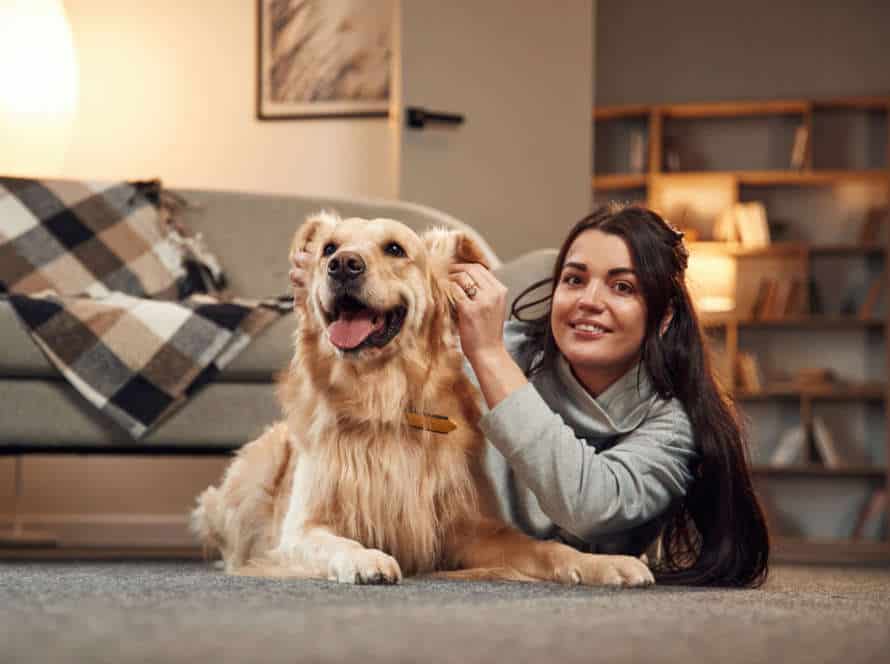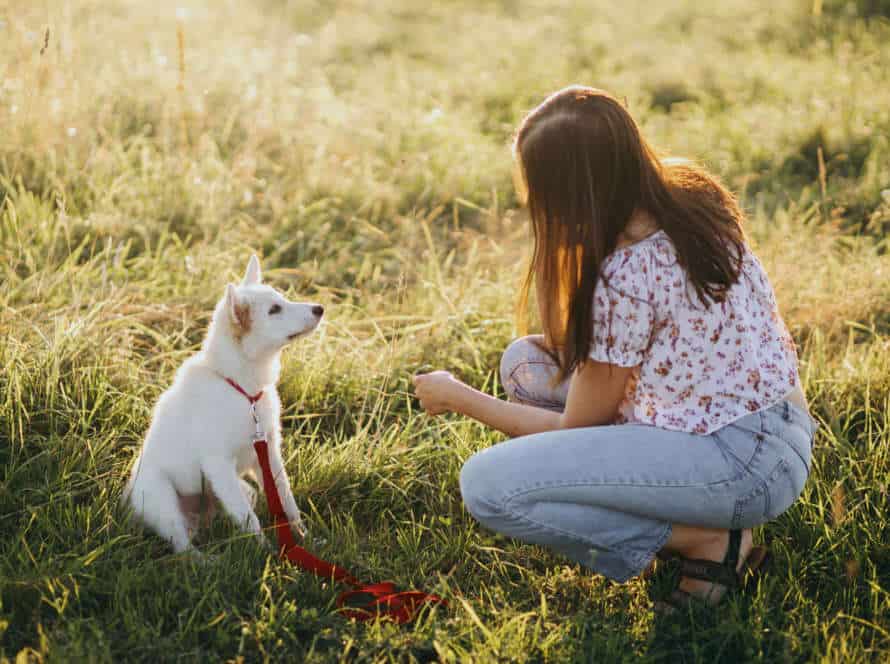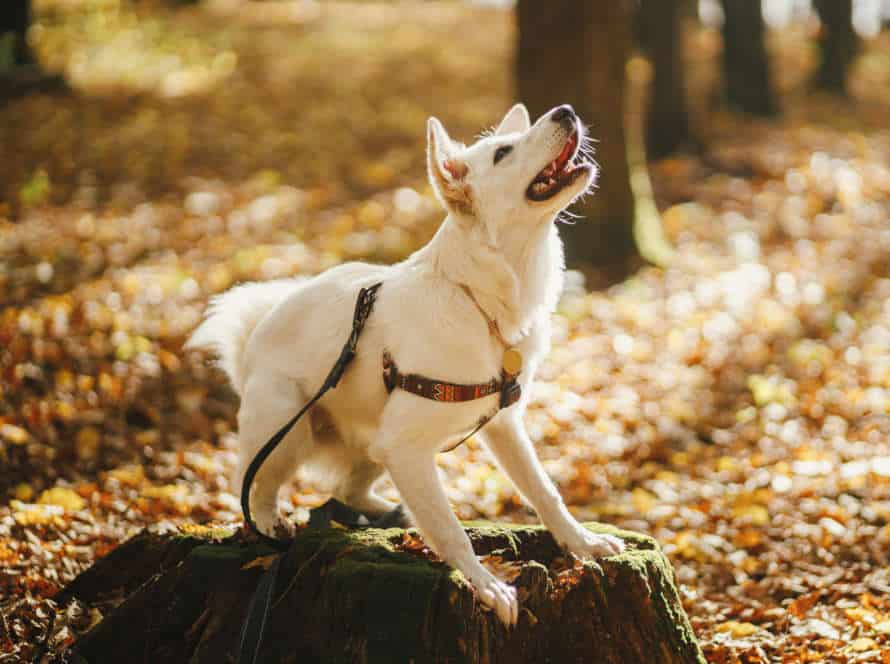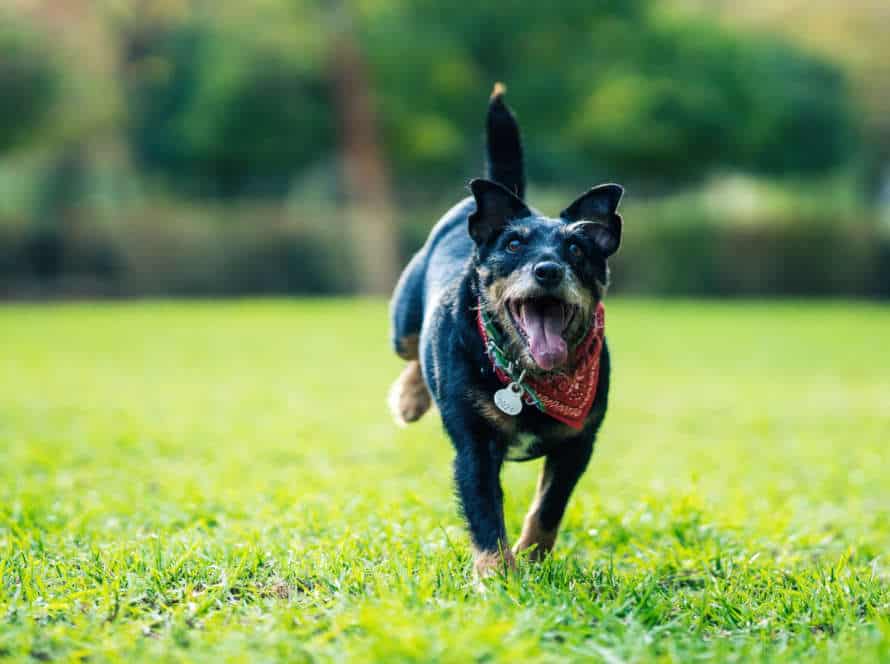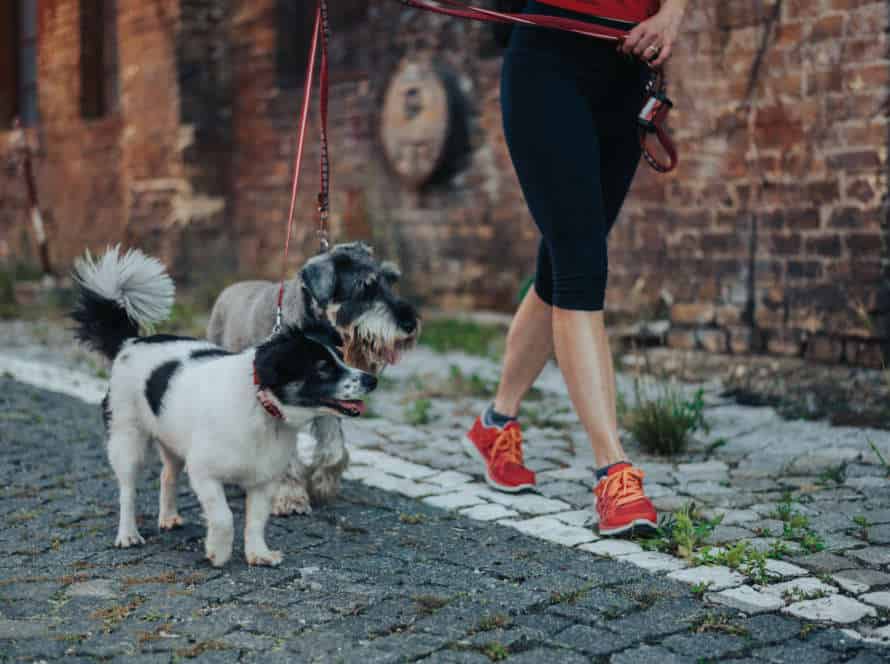The Importance of a Solid Come Command for Your Dog’s Safety
A reliable ‘come’ command is super important! It can keep your pup safe in any situation – home, park, walk. You name it! It prevents chasing animals, getting into trouble and running away.
Why is it so important?
- Safety – Keeps your dog from harm’s way and from accidents.
- Control – You have more control over movements and behaviour.
- Bonding – Strengthens your relationship with your pet.
Don’t forget to use positive reinforcement and practice regularly. A pro tip – keep the training sessions fun and short for the best results!
Understanding the Concept of a Come Command
Come! It’s time to learn one of the most vital commands for your pup. This command could save their life! With a reliable come command, you can call Fido away from hazardous situations and control them if needed. Let’s discuss how best to understand and use the come command for your dog’s safety!
Defining a Come Command
A Come Command is a cue used to call your pup back to you. It’s key for safety and should be part of basic training. It can stop accidents and bad situations, like running into a busy road or close to an aggressive pup.
The Come Command is simple; the doggo learns to connect the word “come” with going back to their owner. Positive reinforcement is best, like treats, praise, and toys. Avoid using the word when angry or frustrated, else it may have a negative link with the command.
A Come Command takes time and patience, but is worth it for safety. Practice at different places, with distractions, until the pup can do it reliably. Well-trained doggos are happy and safe!
Pro tip: Keep the Command in practice so your pup is always trained and confident.
Why a Come Command is Important for Your Dog’s Safety
A Come Command is a must-have for every pup parent! It could save your pup’s life in a risky situation. This command is a signal for your pup to come back to you. Here’s why it’s so important to teach your pup a solid Come Command:
- It can protect them from danger, like busy roads, humans, and other animals.
- It gives you better control in emergencies.
- It strengthens your bond by building trust and friendship!
Remember to keep training sessions positive, frequent, and consistent. No punishing your pup for following the “Come” command!
Benefits of Teaching Your Dog a Solid Come Command
Having a reliable “come” command is essential for your dog’s safety and wellbeing. Teaching this command also has many benefits for you both!
Firstly, it can help stop your pup from running into bad situations. This can include crossing a hectic road.
It also promotes freedom. You can take your pooch off the leash and let them explore safely in a controlled area.
A strong “come” command also strengthens the bond between you and your pup. It requires trust and understanding.
Plus, you can use it to control your dog in social settings. This prevents them from jumping on people, snatching food, or running away.
Lastly, teaching the “come” command is a great form of positive reinforcement. It boosts self-esteem and confidence in your pet. Pro tip: Use treats, positive verbal reinforcement, and enthusiasm while training your dog to come.
Tips for Teaching Your Dog a Solid Come Command
Train your dog a great ‘come’ command? Must do! It’s one of the most important safety steps for pet owners. A reliable and consistent command will ensure your pup comes to you when you call, even in a crisis. Learning how to train your pup with a ‘come’ command needs patience and consistency. But, it’s worth it – promise!
Here are some tips for teaching your pup a awesome ‘come’ command:
Starting with Basic Training Commands
Training your pup a clear “come” command is key for their safety. Here are some tips to start:
- Use commands such as “sit,” “stay,” and “come.”
- Provide treats, appreciation, and playtime to reward your dog’s good behaviour.
- Train your dog in a distraction-free place, and increase the level of distraction as they improve.
- Make the “come” command an enjoyable experience for your pup by using a cheerful voice, being excited, and giving rewards.
- Only use the command when you know your dog will obey. Don’t use it for negative reasons like conditioning or scolding.
With regular training and practice, your dog can understand a strong “come” command that can keep them safe and promote a healthy, happy bond between you both.
Using Positive Reinforcement to Teach Your Dog
Positive reinforcement is a great way to teach your pup a strong “come” command. This means you give them a treat when they do the command right and encourage the behaviour you desire. Here are some tips:
- Pick a unique word or phrase, like “come” or “here”.
- Start training in a quiet place- think room or backyard.
- Hold a treat, call your pup’s name, then give the command in a clear, confident voice.
- If they come to you, reward with praise and the treat.
- As your pup gets better, increase the distractions.
- Be patient and use positive reinforcement, don’t punish for not obeying.
This command is key for your pup’s safety, especially when off-leash. With patience and positive reinforcement, your pup can learn this vital command and stay safe.
Practicing Recall in a Safe and Controlled Setting
Training your pup to recall in a secure, monitored area is vital for teaching them a reliable “come” command and safeguarding them. Here are some tips for helping:
- Start small-distance wise. Begin with a short separation and gradually build up.
- Use rewards. Reward your pup every time they answer your call, even if it takes a few tries.
- No punishments. Never punish your pup for coming over. This could weaken the response or make them hesitant in the future.
- Vary the environment. Once they have a good recall in a familiar atmosphere, practice in other places.
- Make it enjoyable. Incorporate fun and enthusiasm into recall training to make it a positive, enjoyable experience.
Having a strong “come” command can stop mishaps, guard their life and make them an obedient, content companion.
Common Mistakes Owners Make When Training Their Dogs to Come
Train your pup to reliably come when called! It’s an important skill. Without it, your dog may get in dangerous situations. Even worse, it could put itself and others in harm’s way.
Just saying the command isn’t enough. You need to know the common mistakes owners make to help ensure success. Let’s talk about those mistakes so you can avoid them.
Inconsistency in Training
Dog owners often make one common mistake when training: inconsistency. This is especially true for the “Come” command which is so important for your pet’s safety and good behaviour.
Here are some mistakes to avoid:
- Using the command too loosely and inconsistently
- Punishing the dog when they do come
- Starting from a distance that is too hard for the pup
- Playing or rewarding with treats without enforcing a response
To get a solid “Come” command, you need consistency, clarity and positive reinforcement. No punishment. Start with the basics and slowly increase the distance. Pro tip: Reward your pup with enthusiasm and treats when they obey, and make sure all family members use the same language and body language.
Using Negative Reinforcement or Punishment
Negative reinforcement, or punishing your dog when they don’t come when called, is a common mistake many dog owners make. This can have bad effects on your pet’s behavior and health.
Positive reinforcement is the better way to go. Reward your pup with treats, praise, and playtime when they obey the “come” command. It will make learning more enjoyable for them and strengthen your bond.
With a good “come” command, you can keep your pet safe from potential danger. So, be patient and consistent in your training. And, reward the good behavior with treats and praise. With practice, your dog will come when you call without negative reinforcement.
Allowing Distractions to Detract from Training
Dog owners must avoid a common mistake: letting distractions take away from training. It’s crucial for a pup’s safety to learn the come command. Here are some missteps to watch out for:
- Not starting with the basics. Make sure your dog knows the basics before adding distractions.
- Not using positive reinforcement. Use rewards like treats to motivate your pup.
- Allowing distractions. Get rid of distractions until your pup is ready for them.
- Not practicing enough. Be consistent and practice the come command regularly.
Focus on building a solid come command with positive reinforcement. This will keep your pup safe and help you two bond.
Pro tip: Always stay positive while training. This will make your pup more alert and responsive.
Troubleshooting Your Dog’s Come Command
Teaching your doggy to come when called is uber important for their safety. Troubleshoot any issues that arise when teaching this command. Here are the steps to take for pup to respond correctly and stay safe:
- Get the basics down.
- Reward good behavior.
- Be patient.
- Practice in a safe place.
Your Dog is Not Responding to the Come Command
Having a pup that doesn’t respond to the “come” command is irritating and unsafe. To fix this, consider these tips:
- Reinforcement: If your dog doesn’t come when you call, they may not have gotten enough incentives. Use treats or toys to reward them when they do obey.
- Training: Maybe they don’t know what the command means. Teach them to link the word with the action. Use a long lead to practice recall in different places, with more distractions each time.
- Consistency: Different family members might give different orders, confusing your pup. Everyone in your house should use the same command.
- Distractions: Maybe the environment is too stimulating. Practice in a calmer environment, and then increase the distractions.
By trying out these solutions, it’ll result in an obedient and responsive pooch, which is critical for their safety.
Your Dog is Taking Too Long to Come
Does your pup take forever to come when you call them? This can be due to a few different things. Having a great ‘come’ command is key for your dog’s security and wellbeing, so it’s wise to look into the issue.
Here are some possible reasons why your dog won’t follow your ‘come’ command:
- Distractions – Sounds, smells, or other animals around them may be distracting your pup.
- Enforcement – You may be reinforcing their disobedience unknowingly, by giving them attention or treats when they come late or not at all.
- Training – Your pup may not have been trained properly or may not understand what ‘come’ means.
- Health – Your pup may be in pain or discomfort, making them less likely to respond.
- Fright or Anxiety – If your pup is scared or anxious, they may not come to you.
By figuring out the root of the problem, you can find ways to improve your pup’s ‘come’ command and keep them safe. Pro Tip – Always use positive reinforcement and make training an enjoyable activity for your pup.
Your Dog is Not Consistently Responding to the Command
Having a pooch that doesn’t obey the ‘come’ command can be maddening and dangerous for them. Here’s how to sort it out:
- Check the command: Make sure it’s clear and always the same.
- Up the motivation: Use yummy treats, praise, and playtime as rewards.
- Drill, drill, drill: Practice in different places; from quiet rooms to noisy parks. Increase difficulty bit by bit.
- Leash training: If they’re still struggling, try a long leash to help reinforce the command and motivate.
Remember, a solid ‘come’ command is essential for safety and good times. Keep practicing and stay patient with your furry pal.
Practical Applications of a Solid Come Command
Train your pup to obey the ‘come’ command! This can be really useful. It keeps your doggo safe and sound. You can call them back to you, so they don’t go into any dangerous places. Here are some of the best uses of the ‘come’ command:
Ensuring Your Dog’s Safety in Public Spaces
To keep your pup safe in public, you need a dependable “Come” command. This is one of the most vital things to teach your dog. It can help protect them from risky scenarios. Here are the benefits of a strong Come command:
- In an emergency: The Come command helps you call your dog back quickly, avoiding danger.
- Preventing scuffles: When meeting other dogs, a reliable recall can avoid aggressive encounters or other awkward situations.
- Off-leash play: With a dependable Come, your pup can have off-leash fun and exercise without the worry of running away or getting into trouble.
Training a reliable Come requires patience, consistency, and positive reinforcement. With practice, you can provide your pup with protection and peace of mind in public.
Enabling Off-Leash Activities
Letting your pup roam off-leash is a great way to give them exercise and help them socialize. But, it’s critical to have a reliable “come” command to keep them safe and in check. Here are some uses:
- In an emergency, a solid “come” can bring your pup back to you if they’re running towards a hazardous area or a hostile creature.
- For off-leash hikes, a dependable “come” means you can take your pup on outdoor trips without worrying they’ll wander off or get into trouble.
- And finally, with a strong “come” command, your pet can play and socialize in the dog park without risk.
Pro Tip: For a successful “come” command, ensure consistent training and positive reinforcement. Start off in a distraction-free area, then gradually make the environment more challenging.
Advanced Come Training for Working Dogs
Advanced come training is vital for working dogs. It helps them to return quickly and safely to their handler in emergency situations. A solid come command can be a life-saver! Here are some applications:
- Forced Retrieval & Search & Rescue Tracking: A well-trained working dog can be taught to come even when tracking or retrieving with a target in sight. This helps the handler control the dog and complete the task.
- Personal Protection Scenarios: In high-pressure situations, a reliable come command allows the handling officer to call back the dog with urgency or redirect them when needed.
- Emergency Medical Commands: A dog trained in advanced come commands can learn to signal distress, detect medical emergencies, and even provide first aid if their handler is injured or unable to help.
Remember, a well-trained dog can work effectively & safely only if its handler invests time in its advanced come training.
Pro Tip: Use a firm & consistent tone when training your working dog. Positive reinforcement encourages good behavior.
Conclusion: The Long-Term Benefits of a Well-Trained Dog
A trained pooch has plenty of long-term gains. One of the most essential commands they can learn is “come.” Here’s why it’s important for safety:
- Control. When your dog can be called, the chances of accidents are reduced.
- Emergencies. A reliable recall can be vital when an emergency arises, keeping your dog away from danger.
- Freedom. If trained well, you can let your pup explore without close watch.
To sum up, teaching your dog the come command leads to a safer, happier pup and a stronger bond with you.
Frequently Asked Questions
1. Why is a solid come command important for my dog’s safety?
A strong come command can prevent your dog from running into dangerous situations such as oncoming traffic, dangerous animals or busy spaces.
2. How often should I practice the come command with my dog?
You should practice the come command with your dog on a daily basis, preferably at different times in different locations to reinforce the skill.
3. What is the best way to train my dog to come when called?
The most effective way is to use positive reinforcement, starting with short distances, gradually increasing distance and distractions. Always reward your dog with praise and treats for successful recalls.
4. Can I still allow my dog off-leash if they have a solid come command?
Off-leash activities can be an enjoyable experience for both you and your dog, but it is still important to remember that distractions can arise. It’s always better to err on the side of caution and keep your dog on a leash in unfamiliar environments.
5. What should I do if my dog doesn’t come when called?
It’s essential not to punish your dog, and instead, simply return to short distances or lower levels of distractions and start training again.
6. How can I maintain a strong come command throughout my dog’s life?
Regular practice and reinforcement via positive associations, such as treats or praise, can help keep the come command strong throughout your dog’s life. Consistently using the command in everyday activities, such as calling your dog to come inside, will keep the command fresh in your dog’s mind.


